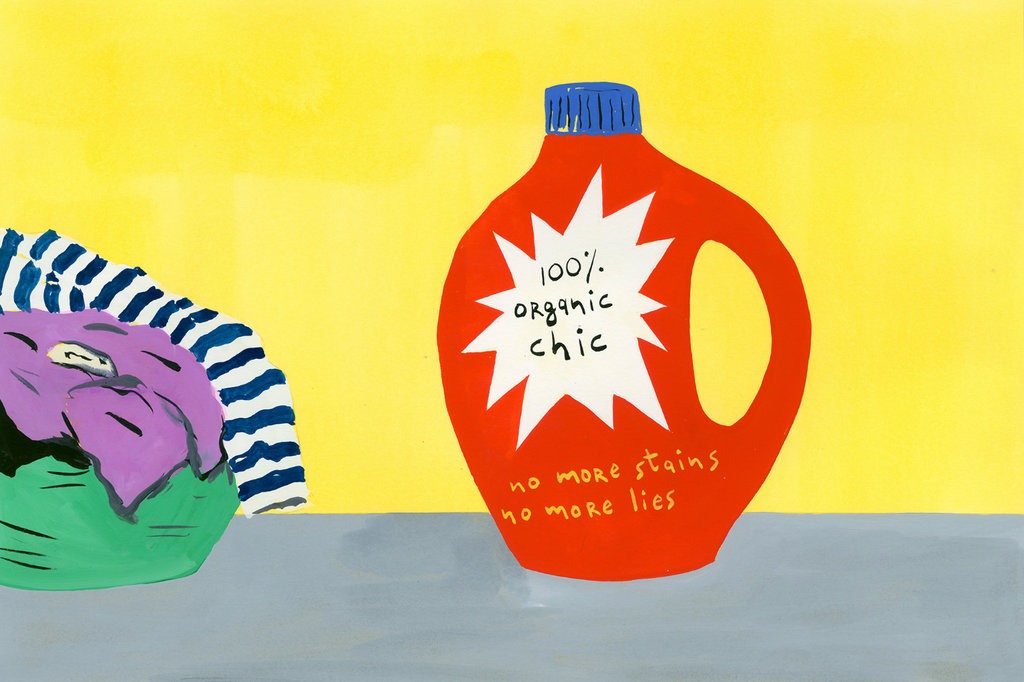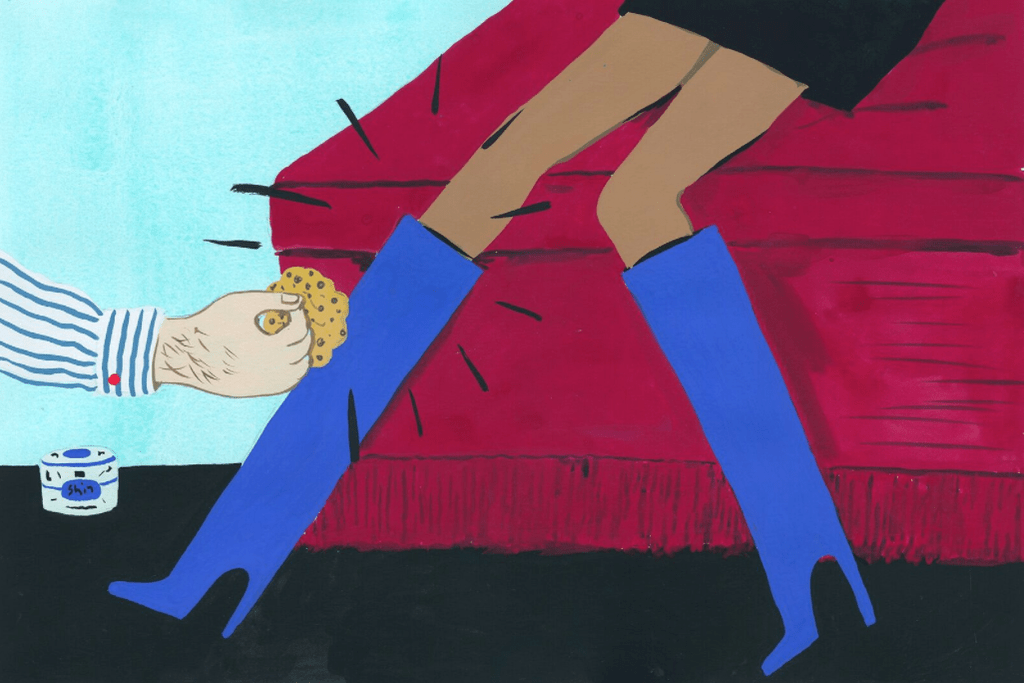How to Take Care of Your Clothes

Buying clothes built to last is one thing — but there’s a lot you can do to make them endure. We polled designers and the dry cleaners they trust for tips on how to take care of our clothes. And our biggest takeaway is that first and foremost, everything we wear should be enjoyed — accessorised with a joie de vivre and not a fear of getting ruined. Here are the experts’ tips for wearing, storing and even cleaning your clothes correctly to prolong the life of your favourite items.
Intimates and Swimwear
Treat Your Delicates Like Delicates
Araks Yeramyan, the founder of Araks, is beloved for her line’s underthings and swimsuits — which she says to wash by hand and never put in the dryer. “On a few lazy occasions, I have tried putting intimates in the machine, and the elastic is never the same.” Even while travelling, she’ll pack light and hand-wash items in the shower.
Yeramyan’s method for washing delicates at home:
- Wash like colours together.
- Fill a basin with cool water and a gentle detergent (she uses Ecover delicate wash). Or in a pinch, fill the sink with water and shampoo (Dr. Bronner’s lavender soap, in her case).
- Swirl the laundry a few times over the course of an hour.
- Gently squeeze out excess water.
- Dry on a drying rack.
Rinse After Taking a Dip
“Swimwear always needs to soak in water after every use; the saltwater or chlorine breaks down the fibres and the elastic. Your suits will last much longer if you follow this rule,” said Yeramyan.
Let Everything Air Out
“Everything with elastic in it should be in a rotation, especially bras. The elastic needs to relax. In general, no matter what you do, elastic has a shelf life, but the better you take care of them the longer they will last.”
Yeramyan also recommends storing lingerie with space around it, for a little breathing room. And slipping empty perfume bottles into lingerie drawers: “The idea is it leaves a little scent behind.”
Tops
Dress Shirts
“The width of the hanger should not overpass the width of the shirt shoulders.” —Anne-Marie Colban, who co-owns and operates Charvet, a shirt-making company.
Anne-Marie Colban, who co-owns and operates the legendary shirt making company Charvet, suggests these tips for taking care of your button-down shirts:
Pay Close Attention to the Insides of Collars. It’s here that stains can creep up from skin products, like lotion or makeup. Be sure to wash them immediately, especially before hanging shirts in the closet (scroll down for tips on how to remove stains).
Avoid Dryers. They will break down the fibres of the fabric and cause the garment to shrink and age prematurely.
Instead, Air-Dry on Hangers. Colban prefers wooden ones. “The width of the hanger should not overpass the width of the shirt shoulders. Make sure the shoulders are well laid on the hanger and more generally, pull a little bit the fabric of the shirt to limit wrinkles (this will facilitate ironing).” When storing hangers in the closet, she suggests leaving space between them — to keep the pressed shirts smooth.
Rewash Stains. “Before ironing, it is important to check that there are no more stains. If there are, wash the shirt again.”
Iron With Water. Colban advocates for steam or no steam, whatever you prefer, but cautions against completely dry ironing. “It is better to iron the shirt when it is still humid. If necessary, a spray with water can make ironing more easy.”
Iron in Order. The correct ironing order is: collar, cuffs and then the rest of the shirt, says Colban.
Pack Them Well. Before travelling with a dress shirt:
- Button the shirt completely.
- Put a plastic or cardboard band — the kind that come inside new shirts from the store, or from the cleaners — inside the collar (to help support the collar and maintain its shape.)
- With the shirt front-side down, place a sheet of paper or tissue paper on the back of the shirt before folding it (to avoid creases).
- Use soft cases, like these, to keep the shirts in good condition.
- When piling the shirts, alternate their directions.
Insider Tip: Wrinkle-Free Travelling. “I travel with a small spray bottle, and then I fill it with water,” says Bruce Pask, Bergdorf Goodman’s men’s fashion director. “When I unpack, I just give the shirts a quick spritz and tug on the bottom of the hem, and then the wrinkles kind of come out naturally without needing to press it again.”
T-Shirts
The designer Tony Melillo, whose eponymous line of super soft T-shirts (ATM) is beloved by T’s web editors, wears a white T-shirt almost daily. Here are his simple tips for taking care of them.
Wash Gently. Melillo suggests washing T-shirts with cold water and drying on permanent press to avoid wrinkles. Also, try OxiClean. “I’m not saying it’s going to take away pit stains but I put it in everything.”
Stash Carefully. Folding T-shirts keeps them fluffy. Melillo suggests folding in the sleeves toward the back, and then folding the T-shirt in half once crosswise, to avoid creating extra creases. And keeping them in a light stack on the shelf. Don’t hang your T-shirts: He says it creates unsightly hanger marks, and it stretches them — T-shirts can grow an inch just from gravity’s effect on cotton.
Bottoms

Pants
“Clean pants twice during the summer. And then when you’re done with the season, clean them once again before you put them back into your closet.” —Bruce Pask, men’s fashion director at Bergdorf Goodman, a department store that specialises in luxury goods.
To avoid high-maintenance care, Bergdorf Goodman’s men’s fashion director Bruce Pask recommends being mindful of the types of pants you buy in the first place. “I’m not a fan of a linen pant,” he says, for example. “I think they’re far too wrinkle-prone and fragile.” Instead, he sticks to worsted wool pants in the summer and wool flannel in the winter, both of which you can clean at home yourself.
Pask’s other low-maintenance pants rituals include:
Don’t Overwash. “I think your regime is a very personal choice but I would say, depending upon how heavy the rotation, clean pants twice during the summer. And then when you’re done with the season, clean them once again before you put them back into your closet.”
Insider Tip: Buying. Even if a pair of pants says it was prewashed, Pask cautions that a bit of shrinkage will inevitably happen in the laundry. “I make sure to give a little bit of allowance for shrinkage when I buy them.”
Never Underestimate Moths. During a traumatising moth infestation (from a European hotel, during fashion week), Pask discovered Insects Limited’s pheromone traps. “I order from them on a yearly basis and I’ll just get a set of traps and put them throughout the house just to have as a preventative measure.” For the less gung-ho, T’s market editor Angela Koh recommends stuffing drawers and closets with sachets of lavender to repel the pests and keep things smelling nice.
Hang Mindfully. Instead of organising pants by colour, Pask suggests arranging them by season, keeping lighter-weight pants together on one end of the closet and heavier ones together separately — so that you can easily find what you’re looking for while getting dressed.
Travel Smart. “Since I go to Italy so often for work, I bought an Italian travel iron there because no matter how good the adaptors are with things like hair dryers and travel irons, the voltage variance is just never quite right and you end up blowing out the circuit of the item.” He also travels with a lint roller, and suggests a retractable option: Flint rollers are compact and keep the refillable lint sheets safe in your bag.
Prepare to Sew. “Buttons just pop. It just happens. So whenever I’m at a hotel, I always take the sewing kit and just leave it in my luggage. Don’t be above taking them home — that’s what they’re there for.” (If you prefer something with nicer thread and tools, Sweethome tested 9 sewing kits to find the best.)
Denim
Jeans may be the most low-maintenance pants of all. According to Daniel Corrigan, half of the design duo behind Simon Miller, “Wearing raw denim consistently and not washing them will give you a more interesting pair of jeans down the road.” But he also adds that washing won’t hurt them, and turning jeans inside out will protect the indigo hue.
Similarly, don’t worry about how you store your denim, whether folded neatly in a drawer or tossed into a pile on a chair — “the great thing about denim is that it’s not delicate”— and don’t think twice about wearing it every day, or getting holes. “The knees are typically the first to get worn out, but denim looks great with ripped knees!”
Stain Removal

“The longer you wait to remove a stain, the less likely you’ll be able to remove it.” —Johnny Xirouchakis, general manager of Madame Paulette, a high-end, New York City cleaner.
Madame Paulette, the gold standard for New York cleaners, is a fashion-world fixture (Vogue and Anna Wintour are clients). According to the company’s general manager, Johnny Xirouchakis, “It’s been proven in studies that the longer you wait to remove a stain, the less likely you’ll be able to remove it.” And his do-it-yourself stain-removal tip couldn’t be simpler:
- Wet a cloth with cold water. (Avoid using paper towels so that they don’t shed on your garment and create more of a mess.)
- Add a drop of dish detergent to the wet cloth. (Xirouchakis suggests using “a citrus-based soap — anything that smells like lemon or orange.”)
- Place another cloth beneath the stain if you can.
- Press on the stain, over and over, to lift it out. Resist the urge to rub, or you might damage the fabric.
- You can let the stain sit overnight, even in water, before putting it in the laundry. Or you can wash immediately after treating the stain.
Here, Madame Paulette’s experts share how to safely remove other kinds of stains at home — on garments that can be safely cleaned with water. Follow each instruction by washing the garment as you normally would.
Blood or Ink. With a cloth underneath the soiled area, re-wet the stain with ice cold water. Using a Q-Tip or small towel soaked in a cleaning solution (5 ounces water, 1 ounce ammonia, 1 ounce peroxide, 1 ounce colour safe detergent) lightly tap the stain, pushing it onto the cloth underneath.
Dirt. Remove any chunks of mud carefully. Place the garment in lukewarm water and move it around to loosen and remove as much dirt as possible. Apply detergent to the stain and re-soak for half an hour; rinse and repeat.
Tomato. With a butter knife or spoon, carefully pick up any excess tomato sauce. Dab detergent onto the stain and, from the underside of the garment, rinse with cold water (to push the stain out of, instead of back into, the garment).
Coffee. Flush the stain with cold water. Then apply a mild cleaning solution (6 ounces water, 2 ounces colour-safe detergent) until the stain comes out. If that doesn’t work, try a tougher solution (2 ounces water, 2 ounces colour-safe bleach).
Jewellery and Handbags

Jewellery
“The most important thing when you buy a piece of jewellery, is to ask the salesperson how to take care of it.” —Rebecca Selva, creative director at Fred Leighton, a curator of vintage jewelry.
Simply put, when it comes to jewellery, “Common sense is critical,” says Fred Leighton’s creative director, Rebecca Selva. She elaborates:
Swimming or Exercising? Take It Off! “Diamonds, you know, are the hardest gemstone. They certainly can be worn and enjoyed every day. However, they are a gemstone that can chip.” So take them off when you might knock the band into other metals, such as while lifting weights — or even packing up to move. And especially in the water. “A ring can loosen on your hand — and try finding it in the ocean.”
Ask for Advice When You Buy. “The most important thing when you buy a piece of jewellery, is to ask the salesperson how to take care of it.”
Don’t Fix It Yourself. Ditch the do-it-yourself mentality when it comes to jewellery. “You can actually damage it more by trying to repair something,” Selva says. But before taking it in to the professionals, put broken jewellery in a Ziploc bag — so that you don’t lose any gemstones, pearls or metal pieces en route to have the item repaired. “Or if a strand of pearl breaks, tape the ends or tie a knot if you can — make sure those ends are somehow sealed.”
Keep Things Organised … and Cool. “Diamonds can scratch other diamonds and diamonds can scratch other gemstones, so keep them separate.” Some stones are vulnerable to heat — like opals, turquoise and coral — so don’t keep them somewhere warm or in direct sunlight. It will affect their colouring.
Don’t Scrub Too Hard. Selva recommends soaking most jewellery in lukewarm, sudsy water (or water with lemon), to loosen up the grime, and then very gently cleaning with a soft brush. Remember, a ring gets the least dirty on top of a stone. It’s the underside that gets the dirtiest because that’s the part that touches the natural oils and lotions on your skin. Avoid hot or cold water (radical temperature changes can affect gemstones) and soaking porous gemstones (turquoise, pearls, opals). And don’t forget to close the drain!
Handbags
Have you ever bought a new leather handbag or briefcase that came in a cotton drawstring pouch? That pouch is called a dust bag — it’s not just fancy packaging. “They help isolate your bag from dust and touching items that may discolour or damage your bag,” says Jed Winokur, Coach’s archive director. He says that regularly storing handbags inside them at home is one of two ways to prevent damage. Here are his other tips:
- Keep handbags stuffed “to help retain their shape.” Acid-free tissue paper (preferably unbuffered) is best; newspaper can cause discoloration and damage over time. Winokur suggests wrapping metal hardware with tissue as well, to safeguard against marks on the leather.
- Give your bags enough room to breathe and resist piling or stacking them — to avoid scratches and creases.
- Store them somewhere cool and dark, away from damaging UV rays. But don’t leave them in the attic or basement, “because dry environments cause leather to crack and moist ones invite mold.”
Clean and moisturize leather bags four times per year — to “keep them looking new.”
Shoes

“In order to keep them in premium condition, dress shoes should not be worn for consecutive days.” —Paula Gerbase, artistic director of John Lobb, which specialises in luxurious men’s shoes.
Because there are so many kinds of shoes, we polled four different experts on the proper care of your shoes:
- Paula Gerbase, artistic director, John Lobb (bespoke and luxurious men’s shoes)
- Tull Price, founder, Feit (handmade leather footwear)
- Percy Steinhart, president and creative director, Stubbs & Wootton (fashionable slippers)
- David Mesquita, vice president, Leather Spa (a repair service with high-end clientele)
Use Shoe Horns. “They are indispensable for keeping the shape of the shoe,” Steinhart says. Gerbase adds that the simple little tool “ensures that the backs of the shoes are kept intact.”
Don’t Toss Shoes Into a Pile. To prevent shoes from being wrinkled or smushed, every single expert suggests storing them with shoe trees — the foot-shaped devices, available in wood or plastic, that help a pair keep its shape. “If not, clear space on the floor and keep them as neatly as possible,” Steinhart says.
Do Regular Maintenance. “Always check your shoes after wear before placing them in your closet,” Mesquita suggests. Wipe leather clean with a cloth or brush before putting away, and brush off suede of any dust collected during the day.
Condition Regularly. “The biggest misconception I suppose is that leather shoes only need waxing,” Gerbase says, “whereas the conditioning cream is a vital step in maintaining the quality and softness of upper leather.”
Here’s how Gerbase recommends you condition your shoes:
- Wrap a soft cotton cloth tightly around your index finger and dab in the cream.
- Apply to the shoe using small circular motions (no sweeping movements).
- Leave the cream to seep into the leather for around 15 minutes and then brush off excess with a soft brush.
Price suggests conditioning your shoes just once or twice a year, usually after the winter months. “With all the snow and salt in the streets, the leather will become dry and cracked and will need to be conditioned to prevent damage to the uppers.”
Let Soggy Shoes Dry — Naturally. “If you get caught in a storm and your shoes become soaked, make sure to let them air dry in an open space laid flat before storing them away,” Price says. “If you store them damp, the uppers may become deformed and you may lose the shape of the shoes.”Gerbase adds that if the shoes are wet from rain or snow, you should immediately rinse them in clean water before allowing them to dry in order to avoid the white marks that appear on the upper leather.
Insider Tip: Sole Repairs. “The tips of soles are what wear out the soonest and you can just get the tip portion of a sole replaced versus replacing the whole sole,” Mesquita suggests.
Invest in Cedar. “Cedar is good to absorb moisture and freshen shoe interiors,” Mesquita says. “I myself use them on my sneakers after I wear them!” Some cedar options include shoe trees and little sachets.
Give Nice Shoes a Rest. “In order to keep them in premium condition, dress shoes should not be worn for consecutive days,” says Gerbase. Waiting “allows the leather to dry and breathe in between wears, and lets them rest with their shoe trees which in turn reduce creasing.” Price adds: “I leave them somewhere where a light breeze can hit them to ventilate.”
Insider Tip: Heel Replacements. Don’t wait until you hear a clicking noise to replace the heel of your shoe. Mesquita says to bring the pair in as soon as the heels look worn down to avoid more costly repairs down the road.
Source: The New York Times
